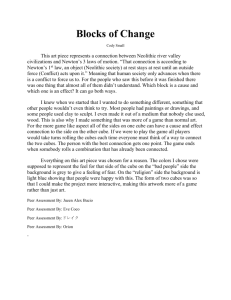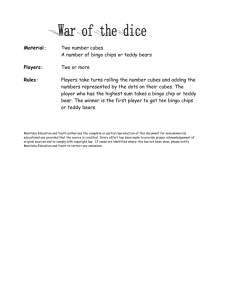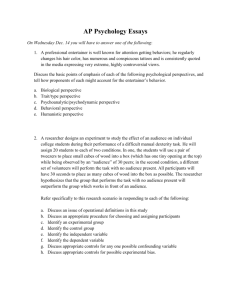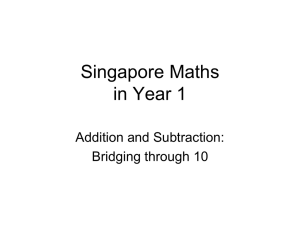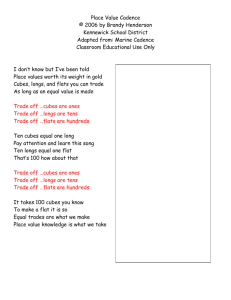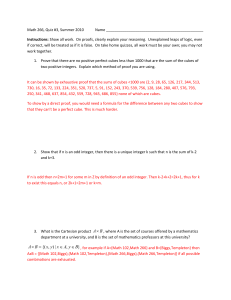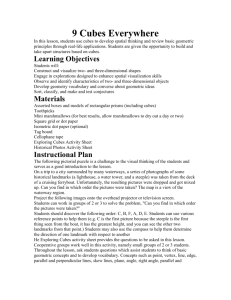5mdc3b unpacked
advertisement
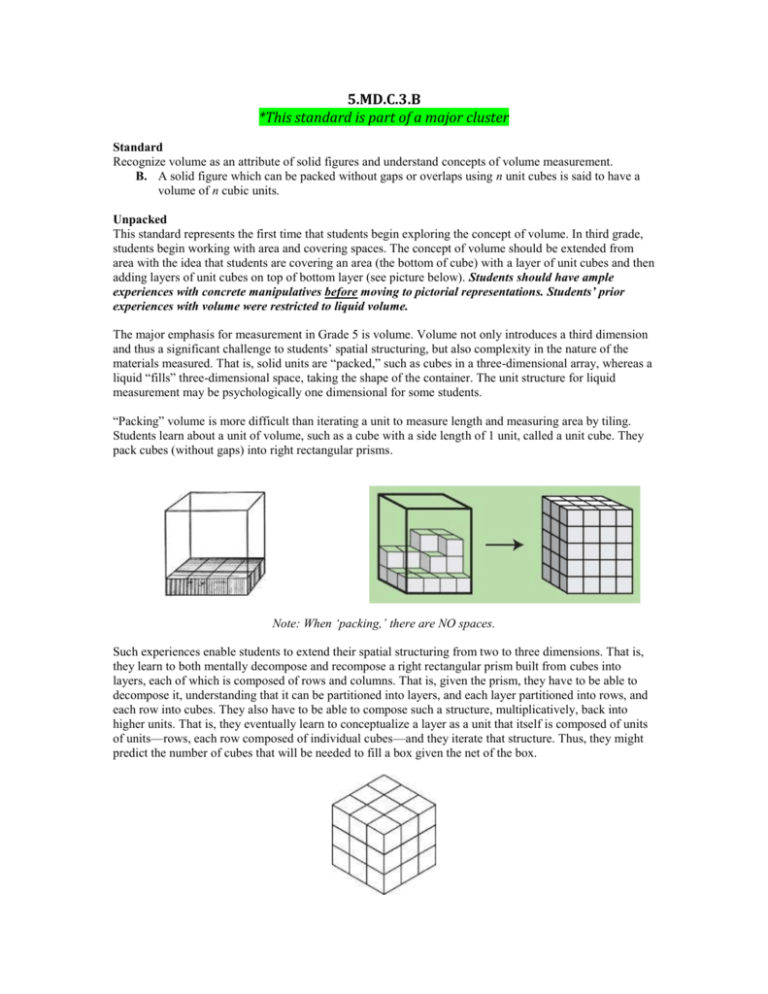
5.MD.C.3.B *This standard is part of a major cluster Standard Recognize volume as an attribute of solid figures and understand concepts of volume measurement. B. A solid figure which can be packed without gaps or overlaps using n unit cubes is said to have a volume of n cubic units. Unpacked This standard represents the first time that students begin exploring the concept of volume. In third grade, students begin working with area and covering spaces. The concept of volume should be extended from area with the idea that students are covering an area (the bottom of cube) with a layer of unit cubes and then adding layers of unit cubes on top of bottom layer (see picture below). Students should have ample experiences with concrete manipulatives before moving to pictorial representations. Students’ prior experiences with volume were restricted to liquid volume. The major emphasis for measurement in Grade 5 is volume. Volume not only introduces a third dimension and thus a significant challenge to students’ spatial structuring, but also complexity in the nature of the materials measured. That is, solid units are “packed,” such as cubes in a three-dimensional array, whereas a liquid “fills” three-dimensional space, taking the shape of the container. The unit structure for liquid measurement may be psychologically one dimensional for some students. “Packing” volume is more difficult than iterating a unit to measure length and measuring area by tiling. Students learn about a unit of volume, such as a cube with a side length of 1 unit, called a unit cube. They pack cubes (without gaps) into right rectangular prisms. Note: When ‘packing,’ there are NO spaces. Such experiences enable students to extend their spatial structuring from two to three dimensions. That is, they learn to both mentally decompose and recompose a right rectangular prism built from cubes into layers, each of which is composed of rows and columns. That is, given the prism, they have to be able to decompose it, understanding that it can be partitioned into layers, and each layer partitioned into rows, and each row into cubes. They also have to be able to compose such a structure, multiplicatively, back into higher units. That is, they eventually learn to conceptualize a layer as a unit that itself is composed of units of units—rows, each row composed of individual cubes—and they iterate that structure. Thus, they might predict the number of cubes that will be needed to fill a box given the net of the box. Questions to check for understanding and increase rigor: Why are the units in volume “cubed”? What are two situations in which you would want to know the volume of something? How are area and volume alike and different? How many different ways can you pack twelve brownies, all the same size, to fit into a box? Do you notice any patterns while you explore the different ways? Explain. A box has the dimensions of 5 cm x 2 cm x 4 cm. Can you create a box with different dimensions but that holds the same number of cubic centimeters (volume)? I packed 24 centimeter cubes inside of a container. What might the dimensions of the container be? What are other possible dimensions? Draw two solid figures that each have a volume of 25 cubic units.



